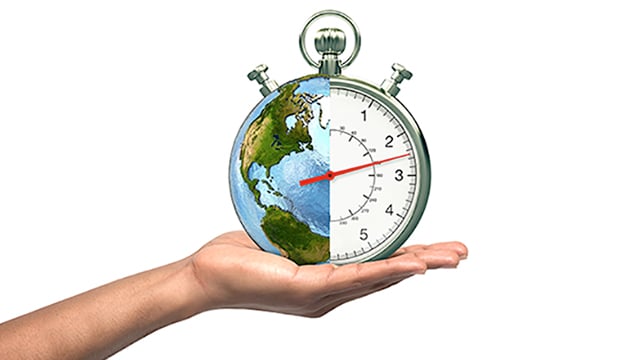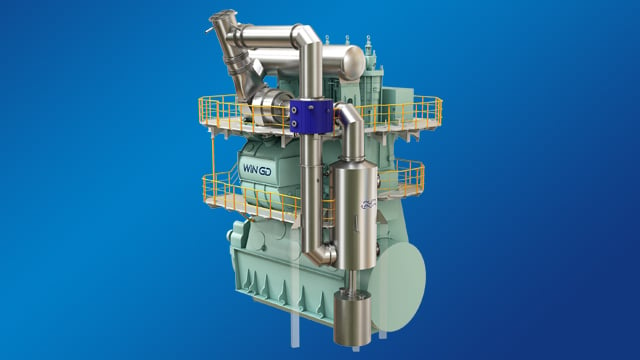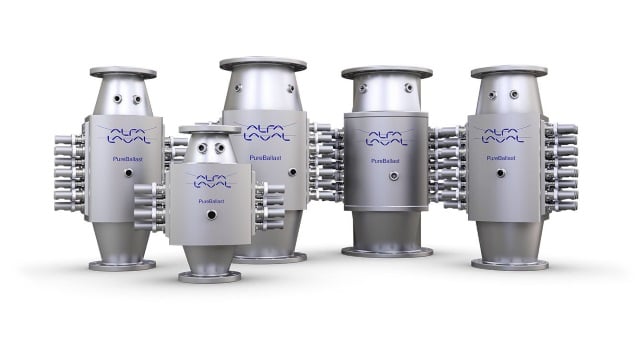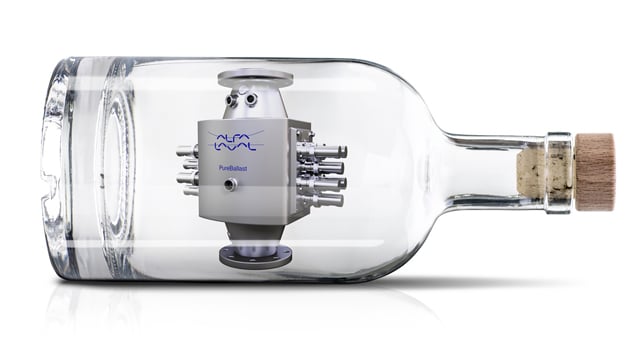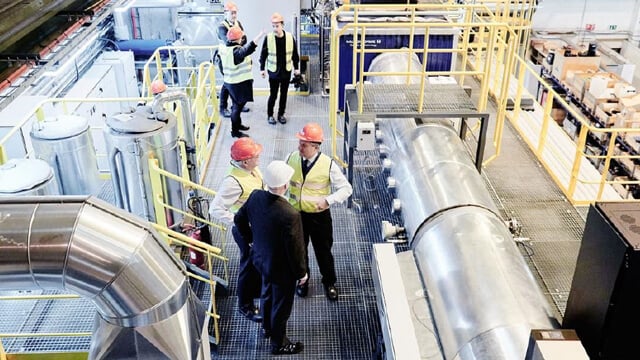2019-04-10 Product news
Alfa Laval PureBallast 3 is now type approved by the U.S. Coast Guard with minimized holding time
Alfa Laval PureBallast 3, the third generation of Alfa Laval’s ballast water treatment technology, has received an updated type approval from the U.S. Coast Guard (USCG). The new certificate makes it possible for vessels to deballast in United States waters with a holding time of just 2.5 hours.
Alfa Laval PureBallast 3 was awarded an updated certificate from the USCG on April 4, granting the system type approval with zero-day holding time in all water salinities. PureBallast 3 owners in United States waters now have the option of discharging ballast water just 2.5 hours after taking it on. The holding time of 2.5 hours, which is due solely to a technical testing procedure, is only applicable if the vessel crosses over into another Captain of the Port Zone within this very short time.
“We are committed to keeping operations simple, even under the more complicated USCG legislation,” says Anders Lindmark, Head of Alfa Laval PureBallast. “The new, and dramatically reduced, holding time for PureBallast 3 removes a key frustration when operating in United States waters.”
Doing away with holding time
Holding time is a designated interval between the completion of ballast water uptake and the start of ballast water discharge. PureBallast 3, like many other treatment solutions, has had a mandatory holding time when operating under USCG legislation – despite having no such requirement under IMO legislation.
The reason UV treatment systems have had holding times in United States waters is the difference in testing methods used by IMO and the USCG to verify biological disinfection performance. However, the recent signing into law of the Vessel Incidental Discharge Act (VIDA) paves the way for the USCG to re-evaluate the IMO-endorsed method. If the USCG decides to accept the same testing principle used by IMO, suppliers of UV treatment systems will likely be able to reapply for USCG type approval based on the IMO testing methodology.
“Alfa Laval is closely following the developments related to VIDA, but we have chosen not to wait for a change in the USCG legislation,” says Lindmark.
Holding time remains an issue for electrochlorination systems
With its updated USCG type approval, PureBallast 3 gains a decisive advantage – not only among UV treatment systems, but also over electrochlorination systems. This is because electrochlorination systems can only achieve short holding times through an increased use of chemicals. For many electrochlorination systems, large amounts of neutralization chemicals are needed to meet the discharge limit for total residual oxidants (TRO).
“Unlike UV treatment, which is chemical-free, electrochlorination involves active substances that must be neutralized before discharge – which requires either time or more chemicals,” says Lindmark. “PureBallast 3 has the fewest limitations of any ballast water treatment technology, and the minimized holding time in United States waters makes those limitations even fewer.”
To learn more about Alfa Laval PureBallast 3 and Alfa Laval’s approach to ballast water treatment, visit www.alfalaval.com/pureballast
Editor’s notes
About Alfa Laval PureBallast
PureBallast, which was the first commercially available ballast water treatment solution, is a chemical-free technology sold and serviced by Alfa Laval. A vital component of PureBallast is the enhanced UV reactor, which was developed jointly by Alfa Laval and Wallenius Water based on Wallenius Water technology. All PureBallast systems are available with both IMO and U.S. Coast Guard type approvals.
About Alfa Laval
Alfa Laval is a leading global provider of specialized products and engineering solutions based on its key technologies of heat transfer, separation and fluid handling.
The company’s equipment, systems and services are dedicated to assisting customers in optimizing the performance of their processes. The solutions help them to heat, cool, separate and transport products in industries that produce food and beverages, chemicals and petrochemicals, pharmaceuticals, starch, sugar and ethanol.
Alfa Laval’s products are also used in power plants, aboard ships, in oil and gas exploration, in the mechanical engineering industry, in the mining industry and for wastewater treatment, as well as for comfort climate and refrigeration applications.
Alfa Laval’s worldwide organization works closely with customers in nearly 100 countries to help them stay ahead in the global arena. Alfa Laval is listed on Nasdaq OMX, and, in 2018, posted annual sales of about SEK 40.7 billion (approx. 4.0 billion Euros). The company has about 17 200 employees.
